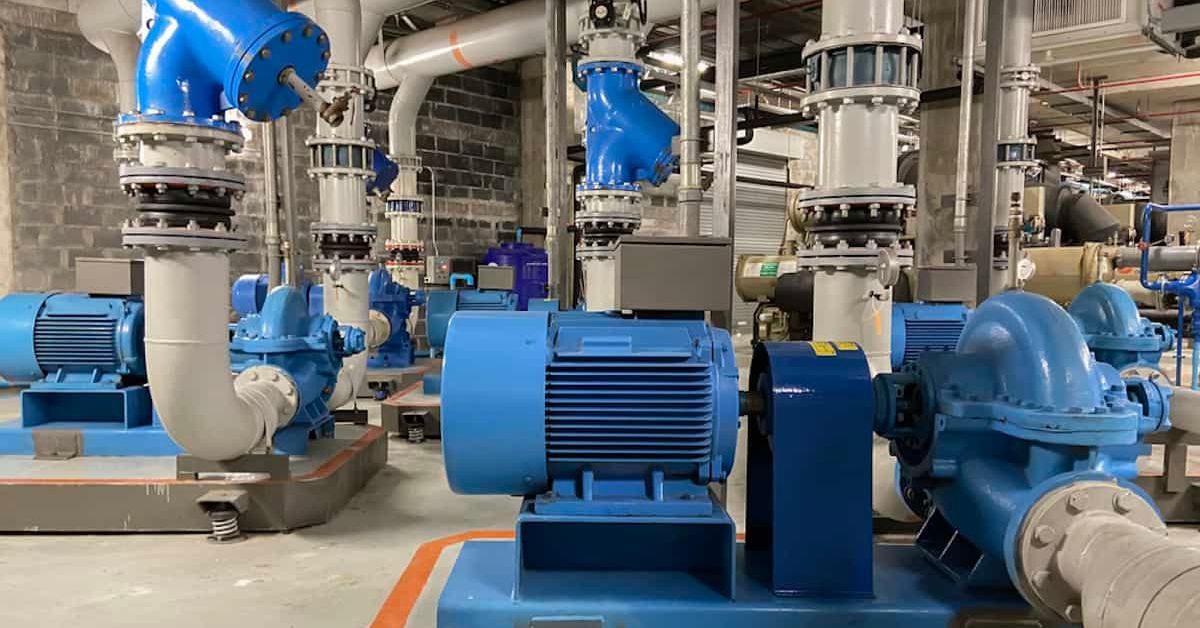
A well-functioning HVAC system is key to maintaining indoor comfort, especially in large commercial buildings. One critical factor that ensures peak performance is chilled water balancing.
Chilled water balancing helps distribute cooling efficiently, preventing some areas from being too hot or too cold. In this article, we’ll explore why chilled water balancing is essential and how to optimize your HVAC system for the best results.
Understanding Chilled Water Balancing
What is Chilled Water Balancing?
Chilled water balancing is the process of adjusting water flow in an HVAC system to ensure even cooling distribution. By optimizing the flow of chilled water, the system operates efficiently, reducing energy waste and improving comfort.
Why is it Important?
- Enhances Energy Efficiency: Proper balancing ensures the system doesn’t overwork, reducing energy consumption.
- Prevents Temperature Imbalances: Avoids hot and cold spots in different areas of the building.
- Extends Equipment Lifespan: Minimizes wear and tear on pumps, chillers, and valves.
Common Problems in Unbalanced Chilled Water Systems
If a chilled water system isn’t properly balanced, you might experience:
- Inconsistent Cooling: Some rooms are too cold, while others remain warm.
- Increased Energy Costs: The system works harder than necessary, consuming more energy.
- Frequent Equipment Failures: Unbalanced flow causes extra strain on HVAC components, leading to breakdowns.
Key Components of a Chilled Water System
To understand chilled water balancing, let’s break down the main components involved:
- Chillers: These produce the chilled water needed for cooling.
- Pumps: They circulate chilled water throughout the building.
- Cooling Coils: Located in air handlers, they absorb heat from the air.
- Control Valves: Adjust the amount of chilled water flowing through different areas.
Methods of Chilled Water Balancing
1. Manual Balancing
Manual balancing involves adjusting control valves by hand to regulate water flow. While effective, it requires regular monitoring and adjustments.
2. Automatic Balancing Valves
These self-regulating valves automatically adjust flow based on system demand, reducing the need for manual intervention.
3. Differential Pressure Control
By maintaining a steady pressure difference between supply and return lines, this method ensures consistent water flow.
4. Flow Measurement and Adjustments
Using flow meters, technicians can measure water flow rates and adjust them for optimal performance.
5. Variable Speed Pump Control
Variable speed pumps adjust their speed based on system demand, improving energy efficiency and preventing overcooling or undercooling.
Steps to Achieve Proper Chilled Water Balancing
- Conduct an Initial System Assessment: Identify problem areas and measure flow rates.
- Measure Flow Rates and Pressure Drops: Use flow meters to analyze system performance.
- Adjust Balancing Valves: Regulate flow to match cooling needs.
- Verify System Performance with Testing: Re-measure and fine-tune the system as needed.
Benefits of a Well-Balanced Chilled Water System
- Lower Energy Bills: An optimized system reduces wasted energy.
- Improved Comfort: Ensures consistent temperatures across the building.
- Reduced Maintenance Costs: Less strain on components means fewer repairs and replacements.
Hiring a Professional for Chilled Water Balancing
When to Call an Expert
If your HVAC system has persistent cooling issues or high energy costs, it’s time to consult a professional.
Tools Professionals Use
- Flow meters
- Pressure gauges
- Differential pressure sensors
- Data logging
Chilled water balancing is a crucial part of maintaining an efficient HVAC system. By ensuring proper water flow, you can improve energy efficiency, extend equipment life, and enhance indoor comfort. Whether you use manual adjustments or advanced automated systems, balancing your chilled water system is a smart investment for long-term performance.
